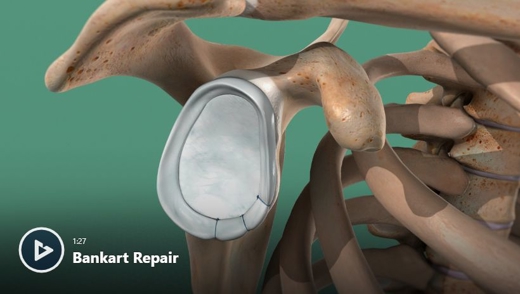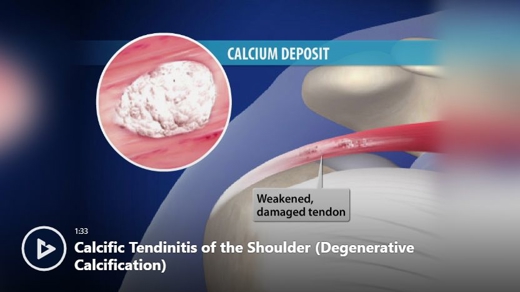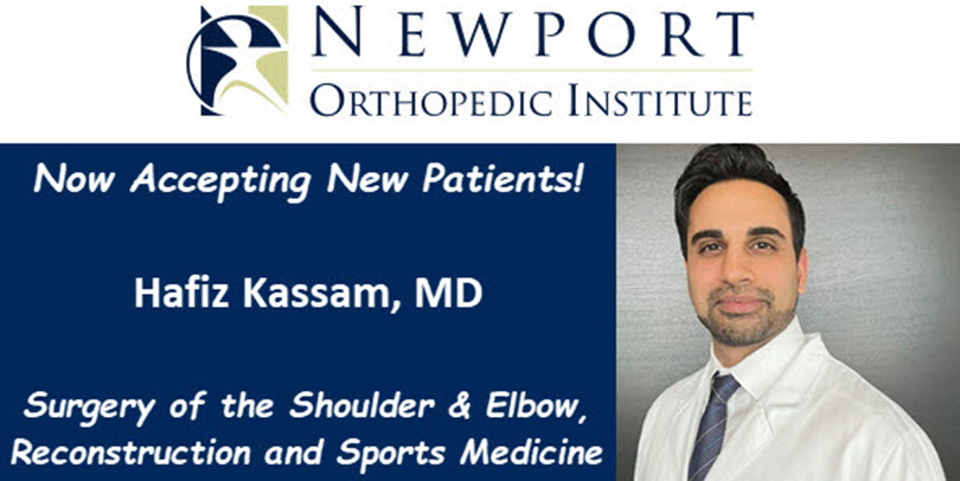
Broken Collarbone
Expert Shoulder Surgeons in Orange County, CA
The collarbone is considered part of the shoulder and helps connect the arm to the body. The collarbone is a long bone, and most breaks occur in the middle section.
It lies above several important nerves and blood vessels. However, these vital structures are rarely injured when the collarbone breaks.
Causes of a Broken Collarbone
A broken collarbone (fractured clavicle) is a common injury among both children and athletes. Many babies are born with collarbones that broke during the passage down the birth canal. A child’s collarbone can easily crack from a direct blow or fall because the collarbone doesn’t completely harden until a person is about 20 years old. An athlete who falls may break the collarbone because the force of the fall is transmitted from the elbow and shoulder to the collarbone.
Broken Collarbone Symptoms
Symptoms of a broken collarbone include sagging of the shoulder (down and forward), an inability to lift the arm because of pain, or a deformity or “bump” over the fracture site. Sometimes there may be a grinding sensation if an attempt is made to raise the arm. Although a fragment of bone rarely breaks through the skin, it may push the skin into a “tent” formation.
Broken Collarbone Treatment Options
Most broken collarbones heal well with conservative treatment and surgery is rarely necessary. A simple arm sling can usually be used to immobilize the arm. A child may have to wear the sling for 3 to 4 weeks; an adult may have to wear it for 6 to 8 weeks. Depending on the location of the break, your physician may apply a figure-of-eight strap to help maintain shoulder position.
Analgesics such as acetaminophen or nonsteroidal anti-inflammatory medications such as aspirin or ibuprofen will help reduce pain. Range of motion and strengthening exercises can begin as soon as the pain subsides. However, you should not return to sports activities until full shoulder strength returns.
In rare cases, depending on the location of the break and the involvement of shoulder ligaments, surgery is needed. Surgery usually gives good results.
Our Broken Collarbone Service Providers
-
 Emilia Ravski DO
Emilia Ravski DO- Sports Medicine (Non-Operative)
View Profile -
 Hafiz F. Kassam MD
Hafiz F. Kassam MD- Orthopedic Surgery
View Profile -
 Myra Trivellas MDView Profile
Myra Trivellas MDView Profile -
 David S Gazzaniga MD
David S Gazzaniga MD- Orthopedic Surgery
View Profile -
 Russell S Petrie MD
Russell S Petrie MD- Orthopedic Surgery
View Profile -
 Shaunak S Desai MD
Shaunak S Desai MD- Orthopedic Surgery
View Profile -
 James H Ting MD
James H Ting MD- Sports Medicine (Non-Operative)
View Profile -
 Taylor R Dunphy MD
Taylor R Dunphy MD- Orthopedic Surgery
View Profile
Where we provide Broken Collarbone Services
-
 Hoag Orthopedic Institute Hospitals & Surgery Centers 16250 Sand Canyon Ave.
Hoag Orthopedic Institute Hospitals & Surgery Centers 16250 Sand Canyon Ave.
Irvine, CA 92618View Location -
 Hoag Orthopedic Institute Surgery Center - Newport Beach Hospitals & Surgery Centers 22 Corporate Plaza, Suite 150
Hoag Orthopedic Institute Surgery Center - Newport Beach Hospitals & Surgery Centers 22 Corporate Plaza, Suite 150
Newport Beach, CA 92660View Location -
 Newport Orthopedic Institute - Huntington Beach Orthopedics Physician Offices 19582 Beach Boulevard, Suite 306
Newport Orthopedic Institute - Huntington Beach Orthopedics Physician Offices 19582 Beach Boulevard, Suite 306
Huntington Beach, CA 92648View Location -
 Newport Orthopedic Institute - Irvine Orthopedics Physician Offices 16300 Sand Canyon Ave, Suite 400
Newport Orthopedic Institute - Irvine Orthopedics Physician Offices 16300 Sand Canyon Ave, Suite 400
Irvine, CA 92618View Location -
 Newport Orthopedic Institute - Newport Beach Orthopedics Physician Offices 22 Corporate Plaza Drive
Newport Orthopedic Institute - Newport Beach Orthopedics Physician Offices 22 Corporate Plaza Drive
Newport Beach, CA 92660View Location -
 Newport Orthopedic Institute - San Clemente Orthopedics Physician Offices 993 Avenida Pico
Newport Orthopedic Institute - San Clemente Orthopedics Physician Offices 993 Avenida Pico
San Clemente, CA 92673View Location
Stories about our Broken Collarbone Services
-
- Shoulder
Petrie Shoulder Scope With Reconstruction
Provider: Russell S Petrie MD“They were very helpful and thorough in providing the information I needed, but did not make me scared about surgery - very reassuring” -
- Shoulder
Shoulder Scope With Reconstruction
Provider: Russell S Petrie MD“Talking through all issues, concerns, and questions. Everyone was personable and professional.” -
- Shoulder
Shoulder Scope With Reconstruction
Provider: Russell S Petrie MD“I appreciated the full explanation of what was going on in my shoulder and being told the plans in advance of what to expect. Seeing the surgical photos of the steps taken during the procedure was awesome.” -
- Shoulder
Shoulder Scope With Reconstruction
Provider: Russell S Petrie MD“The team including the doctor was very efficient and professional and experienced in explaining there part for my surgery. I must say thanks to all.” -
- Shoulder
Shoulder Scope With Reconstruction
Provider: Russell S Petrie MD“Very professional, amazing bedside manner, and just a pleasure to work with.” -
- Shoulder
Shoulder replacement
Provider: Russell S Petrie MD“Dr. Petrie is great. Staff were all friendly, helpful and professional.”
Related Videos
-
 Acromioclavicular (AC) Joint ArthritisWatch Video
Acromioclavicular (AC) Joint ArthritisWatch Video -
 Acromioclavicular (AC) Joint Separation RepairWatch Video
Acromioclavicular (AC) Joint Separation RepairWatch Video -
 Anatomy of the ShoulderWatch Video
Anatomy of the ShoulderWatch Video -
 Arthroscopic Capsular ReleaseWatch Video
Arthroscopic Capsular ReleaseWatch Video -
 Bankart RepairWatch Video
Bankart RepairWatch Video -
 Biceps Tendon Tear (at the Shoulder)Watch Video
Biceps Tendon Tear (at the Shoulder)Watch Video -
 Biceps TendonitisWatch Video
Biceps TendonitisWatch Video -
 Burners and StingersWatch Video
Burners and StingersWatch Video -
 Bursitis of the Shoulder (Subacromial Bursitis)Watch Video
Bursitis of the Shoulder (Subacromial Bursitis)Watch Video -
 Calcific Tendinitis of the Shoulder (Degenerative Calcification)Watch Video
Calcific Tendinitis of the Shoulder (Degenerative Calcification)Watch Video
Blogs about Broken Collarbone Services and Care
-
 Hafiz Kassam, M.D. Receives the Nation’s Highest Award for Clinical Science in Shoulder & Elbow Surgery
Hafiz Kassam, M.D. Receives the Nation’s Highest Award for Clinical Science in Shoulder & Elbow SurgeryHafiz Kassam, M.D., orthopedic surgeon and Director of the Shoulder Reconstruction Division at Hoag Orthopedic Institute, has been awarded the Charles ...
Read More -
 Introducing Hafiz Kassam, M.D., Now Accepting New Patients!
Introducing Hafiz Kassam, M.D., Now Accepting New Patients!Newport Orthopedic Institute is pleased to welcome Dr. Hafiz Kassam to our team. Dr. Kassam is a board-certified orthopedic surgeon who is ...
Read More


